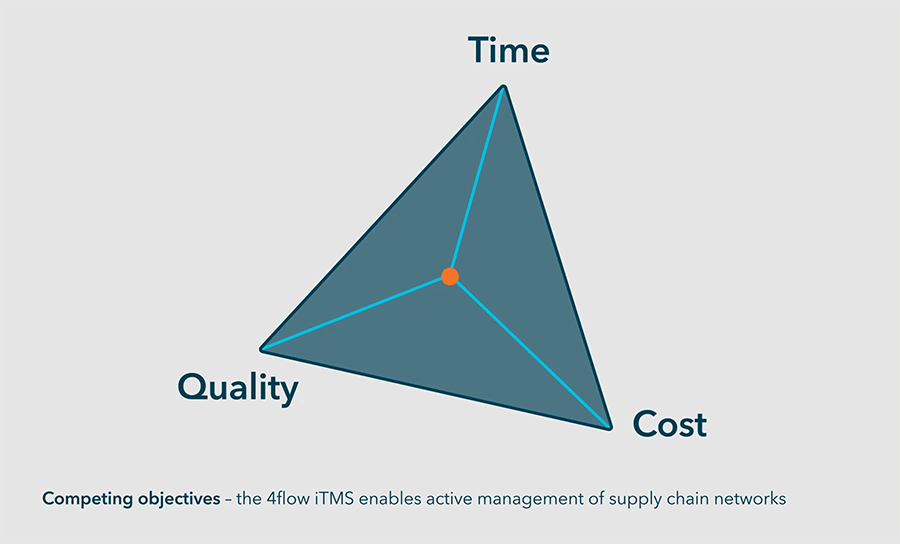Global supply chains are complex systems that can be sensitive to disruptions. The past couple years have shown just how strongly external factors can affect supply chains. The blockage of the Suez Canal, the semiconductor shortage and war in Ukraine: phenomena like these have an impact on multiple industries and require quick reactions.
Transparency over the whole supply chain is key
To enable the necessary agility to react to exceptions, universal information and communication structures are essential. This ensures supply chain viability. To make these structures available, existing supply chains often need to be understood as networks and relevant processes may require readjustment.
Digitized processes offer valuable data and, if these data are used effectively, bring both a time advantage and flexibility that make businesses more competitive.
Authors

Kai Peters
Software Sales

Tilo Schmitz
Product Management
End-to-end approach provides necessary requirements
In complex supply chain flows, an end-to-end view of all processes is key. This holds true in retail supply chains, for instance, where various combinations of distribution levels and an increasing diversity of product portfolios create complexity. With this transparency, processes from planning to execution can be considered when making decisions, and this provides the flexibility necessary for active supply chain management.
To increase transparency in logistics networks, a shipment tracking system can be integrated. Track & trace – shipment tracking in real-time – provides relevant information to every player in the supply chain at any moment. Track & trace also provides transparency around disruptions, such as information about a shipment’s location. This technology enables businesses to quickly identify and overcome disruptions – or even predict them.

Transportation management of the future with the 4flow iTMS
The integrated transportation management system 4flow iTMS begins with the visualization and planning of networks. Using graphic representations of different network levels, the 4flow iTMS quickly offers wide-reaching transparency that renders weak points visible. Furthermore, dynamic alignment ensures transportation structures are always up-to-date and optimally designed. And thanks to the modeling of what-if scenarios, possible alternatives can be evaluated and implemented at any time. Users can proactively manage, process and solve exceptions in the software without switching between software systems. The software solution supports users from network planning to execution, allowing alternative transportation concepts for avoiding disruptions to be implemented quickly and easily. In the process, costs and transit times are optimized, and carbon emissions are reduced.
Integrated transportation process management with the 4flow iTMS
